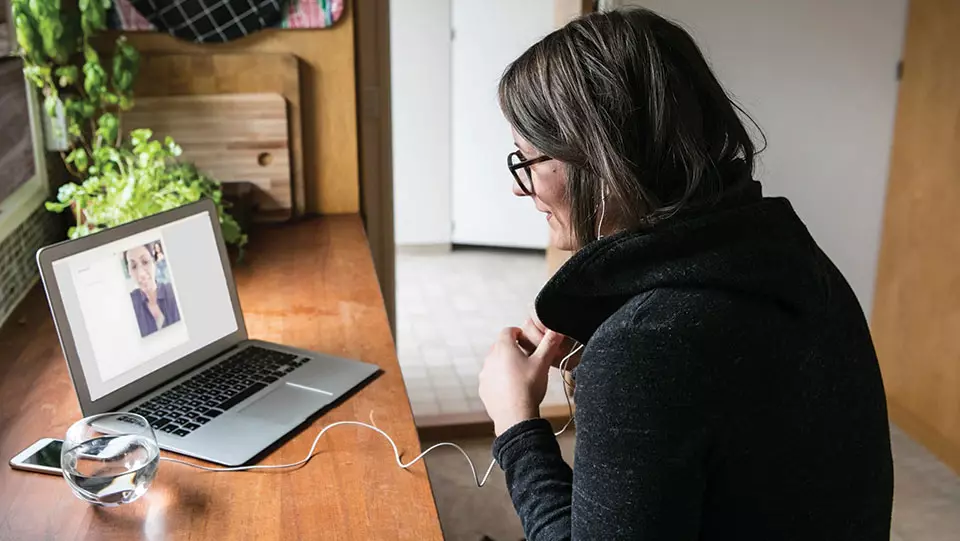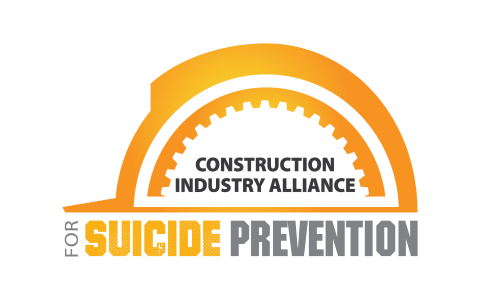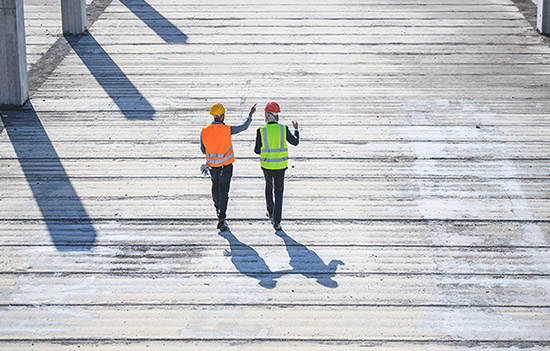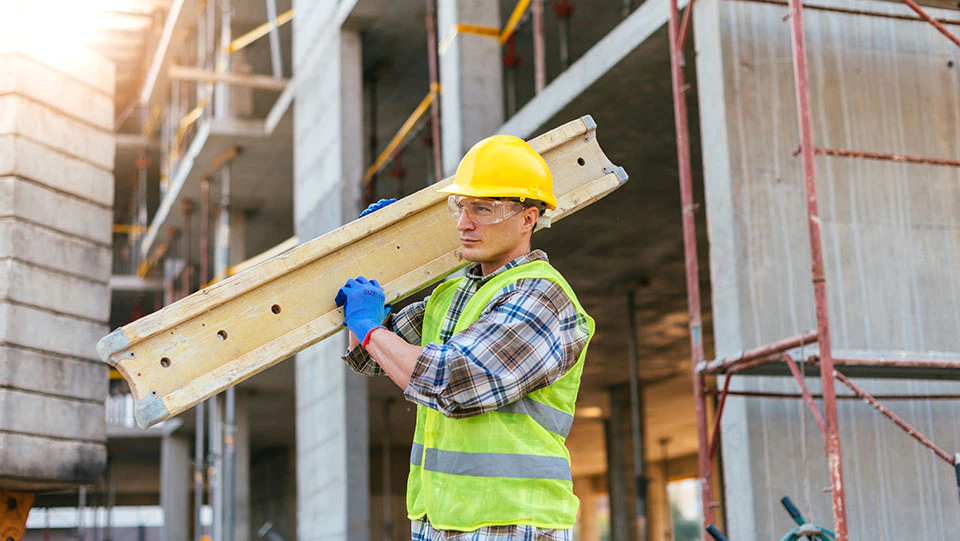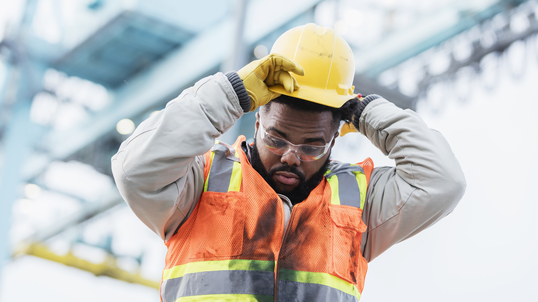Suicide in the Construction Industry

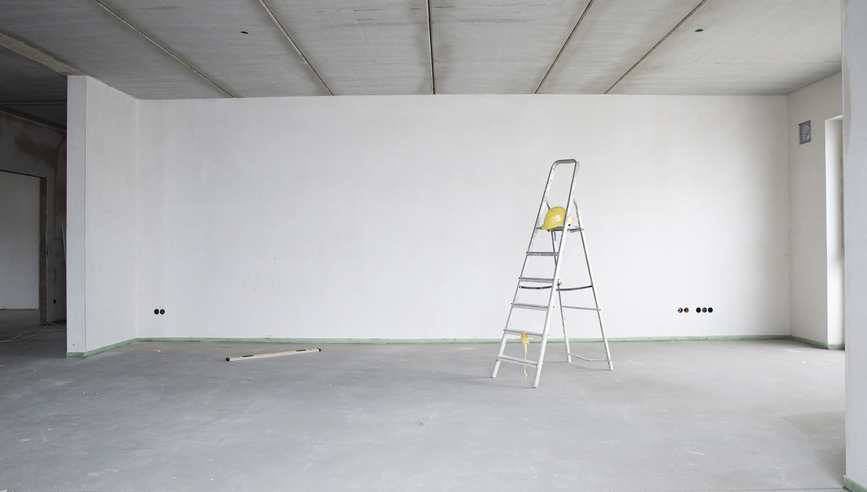
A serious problem
According to the Centers for Disease Control and Prevention, in 2022, more than 49,000 individuals died by suicide in the United States.1 And suicide rates increased by 37% between 2000 and 2018.2 Although there was a 5% decrease between 2018 and 2020, rates once again increased after that.3 Moreover, many medical professionals believe deaths by suicide may be underreported, with some classified as accidents or unintentional deaths.4 In addition, among adults ages 18 and older, for each suicide there are about 30 adults who reported making a suicide attempt.5
Males are almost four times more likely to die by suicide than females,6 and those over the age of 74 or between the ages of 25 and 34 are at highest risk.7 Non-Hispanic American Indian/Alaska Natives are at highest risk of deaths by suicide, followed by non-Hispanic whites (28.1 and 17.4 age-adjusted rates per 100,000 population).8
Other known demographic, biological, psychological and social risk factors include:9
- Rural residence
- Military veteran status
- Non-married status
- White, American Indian or Alaska Native
- Medical conditions including chronic pain, cancer, chronic lung disease, heart disease, spine disorders and stroke
- Family history of suicide
- A previous suicide attempt
- Hopelessness
- Adverse childhood experiences
- Social isolation
- Poor social support
Suicide and construction workers
In 2021, the CDC reported that the construction industry had the second-highest rate of suicide among its workers, surpassed only by mining, quarrying and oil and gas extraction workers.10 Fifty-six out of every 100,000 male construction workers died by suicide in 2021, compared to 32 per 100,000 male workers in all industries.11 This is seen not only in the United States but in other countries as well12 and may be explained by a higher prevalence of certain risk factors in individuals working in the industry. In fact, as stated in an article published by the American Society of Safety Professionals, some have noted that construction workers potentially have a perfect storm of suicide risk factors.13
Demographics. Ninety percent of the U.S. construction workforce are male, a demographic with a high risk of suicide in the general population.14 Additionally, over 15% of veterans – who have a 50% higher rate of suicide15 – enter the construction industry and make up a large percentage of that workforce.16
Cultural. The stoic and self-reliant characteristics of individuals who work in the construction industry may increase suicide risk, according to psychologist Sally Spencer-Thomas, by reducing the likelihood that individuals seek help when needed.17 This reluctance to seek help is associated with psychological distress.18
Psychosocial. Seasonality and fluctuations in an individual’s work may affect an individual’s mental health through the impact of:19
- Economic insecurity as a result of job seasonality.
- Low job control and a fragmented community as a result of frequent changes in co-workers and tasks as jobs change.
- Emotional exhaustion stemming from irregular and long work hours.
- Work-family conflict that may manifest itself as strained relationships, marital breakdown and difficulty maintaining relationships with children.
- Inefficient sleep patterns, including sleep deprivation, that may increase the risk of mental health problems.
- High psychological demands producing strain.
- Mental distress and mental disorders, which are common among construction workers. Furthermore, untreated psychiatric conditions are more common in this group of workers than others.
Physical. Physically demanding construction work not only increases the risk of musculoskeletal disorders – with higher rates than in other industries – but may lead to chronic pain and higher utilization of opioids, as well as the higher opioid overdose rate seen in these workers.20
Drug-related. Use of nonprescription opioids, binge drinking, heavy alcohol use and other drugs is more common among construction workers than in other industries.21
Action plan
Mental health and suicide traditionally have been taboo subjects in society. And yet, the human impact of suicide is extensive and enduring, adversely affecting individuals, families, communities and workplaces. The cooperation of multiple sectors of society – government, healthcare, social, educational, community and business groups – is critical in the fight against it.
According to the American Society of Safety Professionals, the construction industry faces a challenge with this issue. However, we know that many of the risk factors of the individuals working in the construction industry can be recognized, and treatment for underlying mental health conditions may help prevent suicide.22
Consider the CDC’s national comprehensive approach to prevent suicide, which is built around several strategies: strengthening economic supports, improving access and delivery of suicide care, creating protective environments, promoting connectedness, teaching coping and problem-solving skills, identifying and supporting people at risk, and lessening harms and preventing future risk.23
For the construction industry, this could include having open, frank conversations, which can destigmatize mental health conditions and create a supportive environment in which workers feel free to seek and give help.
Training supervisors and other workers on the subject and how to recognize the risk factors can help create a supportive environment and make it more likely that an individual can get the help they need.
A simple “Are you OK?” may open the door to better communication.
And having appropriate resources available as part of the path to better mental health and the prevention of suicide is paramount. The Construction Industry Alliance for Suicide Prevention (CIASP) provides useful resources for companies to help evaluate their mental health and suicide prevention preparedness. Other resources can be found at Workplace Suicide Prevention and National Action Alliance.
Resources
- National Suicide Prevention Lifeline
- Call 800.273.8255 or Chat with Lifeline
- Veterans Crisis Line
- Call 800.273.8255 or text 838255
- Crisis Text Line
- Text TALK to 741741
- Construction Industry Alliance for Suicide Prevention
- CDC Suicide Prevention
- Needs Analysis & Implementation Tool
- Integrating Suicide Prevention in Your Company
- Construction + Suicide Prevention: Why is This an Industry Imperative?
- Construction + Suicide Prevention: 10 Action Steps Companies Can Take to Save Lives
- Webinar: Uniting the Construction Industry Behind Suicide Prevention
- Living Works offering 60-90-minute online suicide prevention training
- Toolbox Talks
Sources
1 Curtin et al.; Provisional Estimates of Suicide by Demographic Characteristics: United States, 2022; Vital Statistics Rapid Release; Report No. 34; November 2023; https://www.cdc.gov/nchs/data/vsrr/vsrr034.pdf
2,3,6,7,8 U.S. Centers for Disease Control and Prevention; Suicide Data and Statistics; https://www.cdc.gov/suicide/facts/data.html
4 Rockett et al.; Mortality in the United States from self-injury surpasses diabetes: a prevention imperative, Injury Prevention; Volume 25, Issue 4; 2019; https://injuryprevention.bmj.com/content/25/4/331
5 U.S. Centers for Disease Control and Prevention; Public Health Strategies for Suicide Policy Brief; https://www.cdc.gov/rural-health/php/public-health-strategy/public-health-strategies-for-suicide.html
9 U.S. Centers for Disease Control and Prevention; Risk and Protective Factors for Suicide; https://www.cdc.gov/suicide/risk-factors/
10,11 Sussell et al.; Suicide Rates by Industry and Occupation – National Vital Statistics System, United States, 2021; Morbidity and Mortality Weekly Report; Issue 72; 2023; https://www.cdc.gov/mmwr/volumes/72/wr/mm7250a2.htm
12 Maheen et al.; Suicide trends among Australian construction workers during years 2001–2019; Sci Rep. 2022; https://www.ncbi.nlm.nih.gov/pmc/articles/PMC9686251/
13 American Society of Safety Professionals; Suicide in the Construction Industry: Breaking the Stigma and Silence; https://www.assp.org/news-and-articles/suicide-in-the-construction-industry-breaking-the-stigma-and-silence
14 Gallagher; The Construction Industry: Characteristics of the Employed, 2003-2020; U.S. Bureau of Labor Statistics; https://www.bls.gov/spotlight/2022/the-construction-industry-labor-force-2003-to-2020/
15 Dempsey; Firearm Suicide Risk in Service Members and Veterans; Anxiety & Depression Association of America; 2024; https://adaa.org/learn-from-us/from-the-experts/blog-posts/consumer-professional/firearm-suicide-risk-service#:~:text=Facts%2C%20Statistics%20and%20Factors&text=Veterans%20have%20a%2050%20percent,the%20nation's%20gun%20suicide%20deaths%E2%80%9D
16 Crawford; Military Veterans Bring Safety, Leadership and Career Ambition to Construction; Construction Executive; 2022; https://www.constructionexec.com/article/military-veterans-bring-safety-leadership-and-career-ambition-to-construction
17 Spencer-Thomas; Construction + Suicide Prevention: 10 Action Steps Companies Can Take to Save Lives; Construction Financial Management Association; 2016; https://www.nahb.org/-/media/NAHB/advocacy/docs/legal-issues/construction-liability/trending-now/10-action-steps-suicide-prevention.pdf
18 Eyllon et al.; Mental Health Stigma and Wellbeing Among Commercial Construction Workers: A Mixed Methods Study (Abstract Only); J. Occup. Environ. Med.; 2020; https://pubmed.ncbi.nlm.nih.gov/32541624/
19 Safety Toolbox Talk; 988 Suicide & Crisis Lifeline; 2022; https://quandel.com/wp-content/uploads/2023/03/9-11-22-Suicide-in-Construction.pdf
20 Dale et al.; Addressing the Opioid Overdose Epidemic in Construction: Minimize Work Factors that Cause Injury and Pain; U.S. Centers for Disease Control and Prevention, NIOSH Science Blog; 2021; https://blogs.cdc.gov/niosh-science-blog/2021/09/14/opioids-in-construction/
21 Ompad et al.; Construction trade and extraction workers: A population at high risk for drug use in the United States, 2005-2014; Drug Alcohol Depend; 2020; https://www.ncbi.nlm.nih.gov/pmc/articles/PMC6910220/pdf/nihms-1542116.pdf
22 Grimmer et al.; Addressing Suicide in Construction; American Society of Safety Professionals; 2022; https://www.assp.org/docs/default-source/psj-articles/bpgrimmer_0222.pdf?sfvrsn=2df89047_2
23 U.S. Centers for Disease Control and Prevention; About Violence Prevention; 2024; https://www.cdc.gov/violence-prevention/about/index.html
